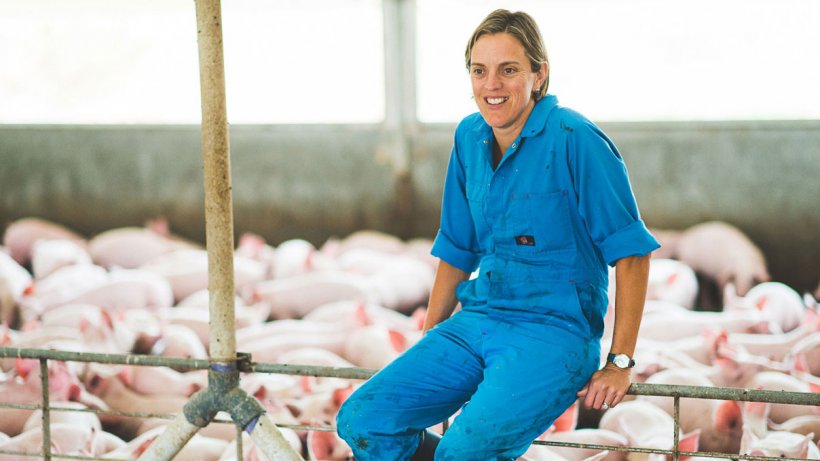 Each of Edwina Beveridge’s two pig sites has a methane digester. Together, they produce enough energy to power the whole farm and then some. It’s a cheaper system than the type used in the United States and Europe, she explains. Instead of an aboveground tank that is agitated and heated, her system is dug into the ground, with a plastic cover to capture the biogas. A converted diesel engine then turns the gas into electricity.
Each of Edwina Beveridge’s two pig sites has a methane digester. Together, they produce enough energy to power the whole farm and then some. It’s a cheaper system than the type used in the United States and Europe, she explains. Instead of an aboveground tank that is agitated and heated, her system is dug into the ground, with a plastic cover to capture the biogas. A converted diesel engine then turns the gas into electricity.
From greenhouse gas to carbon credits

Her power and gas bills used to add up to AUS$15,000 (EUR 9,500/US$ 11,500) per month. Now those costs are gone. The system paid for itself within just two years. “I’m an accountant originally and those are nice numbers,” she says.
She goes on to point out the environmental benefit: “Methane has a global warming potential 23 times that of CO2. In other words, it’s 23 times worse. Now we are no longer releasing methane into the environment. That feels good.” Blantyre was the first pig farm in Australia to get carbon credits from the government for this initiative, which Beveridge can then sell back to it. “That’s the icing on the cake!” she says.
Blantyre was the first farm in Australia with a working inground methane digestion system. Quite a few others have followed. “There are now about 20 methane digesters across the country. I think it’s really exciting that we pig farmers are making our mark,” she says. Once the methane has been collected, the manure is spread on the farm and used as a crop fertilizer. “That way, we make sure we’re getting the most out of it.”
Food waste as feed
Beverridge’s eco-efforts do not end there. She also uses food waste to feed her pigs. Up to 70 to 80% of her pig feed is made up of dairy products and other waste. “It’s great that we’re making use of something that would otherwise end up in the landfill,” she says.
“We use 7 or 8 million liters of waste dairy products every year. This can be whey leftover after making cheese, ice cream, or milk. “Supermarkets won’t take milk if it doesn’t have at least ten days left before the sell-by-date.”
She also uses bread meal – ground-up bread that wasn’t sold – as well as waste from a fish filleting factory nearby. “We take about 20 metric tons of that every week. It’s great pig feed,” she says. In fact, there is so much food waste available, she doesn’t have enough pigs to eat it all. “It keeps production costs down and I could get more feed if I wanted to, I just need more pigs!”
Blantyre is able to make use of so much food waste because of the farm’s liquid feed system. Most other farms use dry feed. “There is only one other pig farmer in Australia who does this on the kind of scale that we do,” Beveridge says. She supplements the food waste with grain grown on her own farm.
Negative carbon footprint
As a businesswoman, she knows that it all has to make sense from a financial perspective, but the added environmental advantages are something that she is very proud of: “We have a negative carbon footprint now and we’re producing nutritious, safe, affordable food. I love that.”
April 18, 2018 - Rabobank




